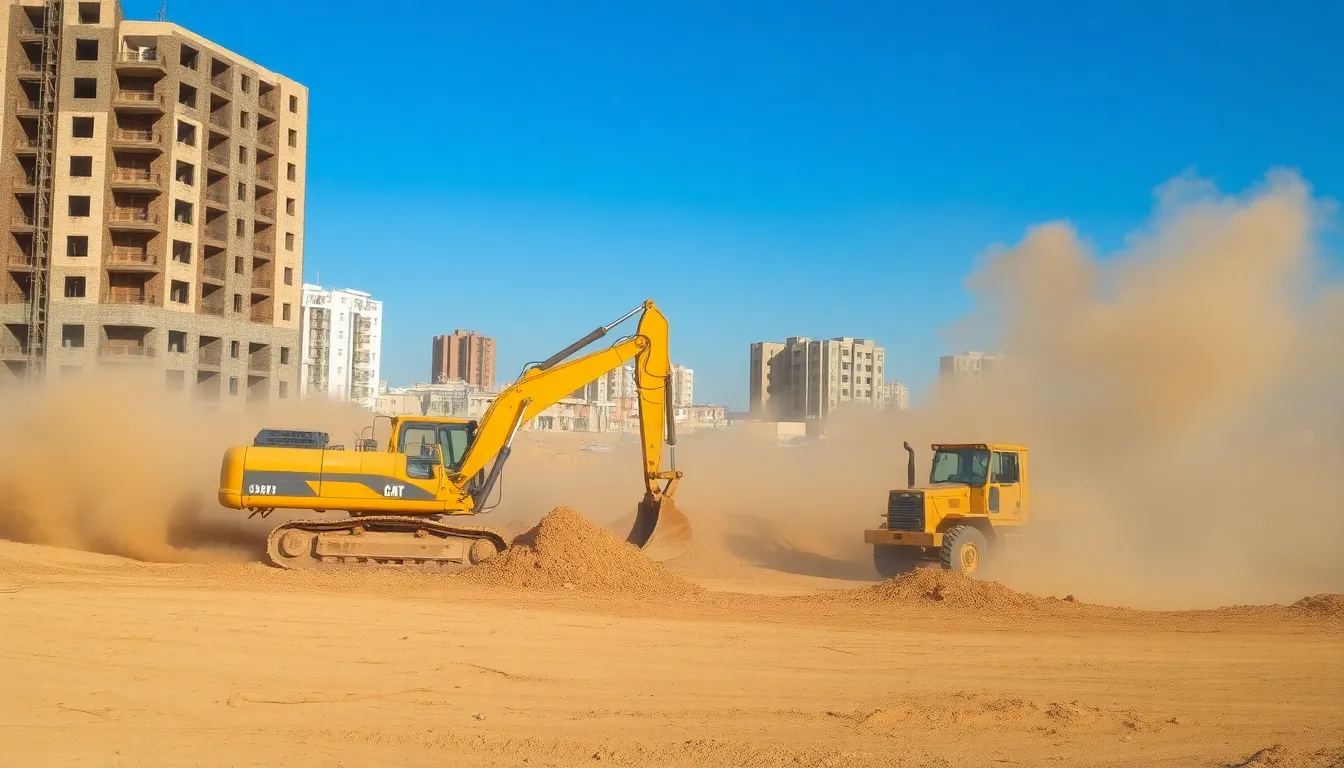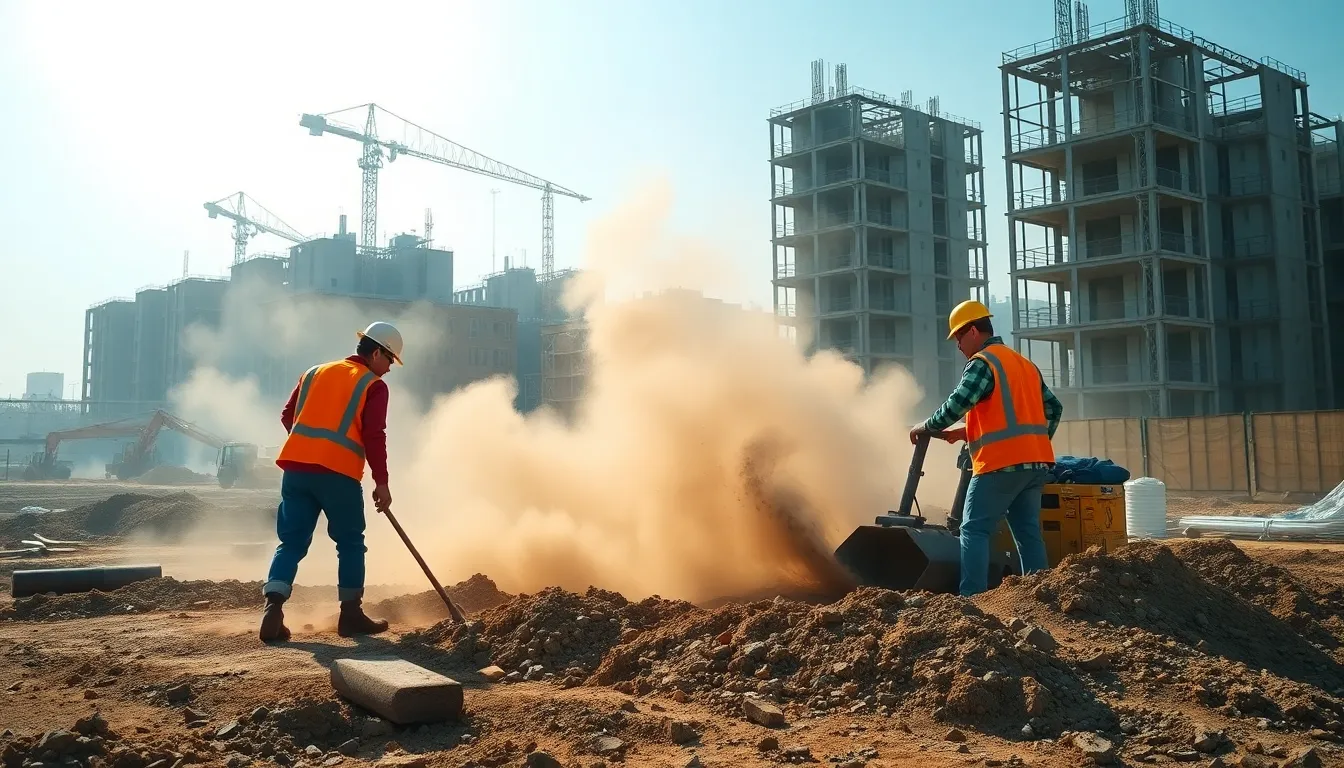Dust pollution might not seem like a pressing issue, but it’s sneaky, pervasive, and can turn any clean space into a sneeze-fest. Imagine a world where every breath comes with a side of fine particles—sounds like a bad sci-fi movie, right? Unfortunately, it’s more of a reality than most people realize. Dust isn’t just a nuisance; it’s a cocktail of allergens, pollutants, and microscopic troublemakers that can wreak havoc on health and the environment.
Table of Contents
ToggleOverview of Dust Pollution
Dust pollution encompasses various tiny particles suspended in the air. These particles originate from multiple sources, including industrial activities, construction sites, and desertification. As dust settles, it can carry harmful substances like heavy metals and pesticides, leading to respiratory issues and other health concerns.
Air quality suffers significantly due to elevated dust levels. Studies show that prolonged exposure to dust pollution correlates with increased rates of asthma, bronchitis, and cardiovascular diseases. Fine particles can penetrate deep into the lungs, exacerbating existing health problems. Polluted air affects not just humans but also wildlife, impacting their habitats and food sources.
Regulations exist to mitigate dust emissions. Governments implement measures like dust control systems and vegetation barriers to reduce airborne particles. During construction, protocols mandate covering materials to limit dust spread. These actions aim to protect both public health and the environment.
Dust pollution is a global concern. Urban areas, especially those experiencing rapid development, often face severe dust challenges. Additionally, arid regions naturally produce more dust due to limited vegetation. Monitoring stations worldwide measure particulate matter levels, helping authorities respond to pollution spikes.
Awareness of dust pollution is crucial. Communities benefit from educational campaigns about reducing dust emissions. Simple actions, like minimizing road dust through wetting or paving, contribute to cleaner air. Individuals can play a role in advocating for policies aimed at reducing dust pollution in their locales.
Causes of Dust Pollution

Dust pollution arises from multiple sources which can be classified into natural and human activities. Understanding these causes helps in developing effective mitigation strategies.
Natural Sources
Natural sources significantly contribute to dust pollution. Wind erosion occurs as strong winds lift fine particles from dry surfaces. Seasonal activities also play a role; specifically, forest fires release soot and ash into the atmosphere. Additionally, volcanic eruptions spew ash clouds that disperse over vast areas. In arid and semi-arid regions, desertification worsens dust levels as vegetation loss exposes soil to wind action. Each of these natural sources can produce large quantities of airborne dust that adversely affect air quality.
Human Activities
Human activities are major contributors to dust pollution. Construction sites generate considerable dust from demolition and excavation processes. Heavy vehicular traffic on unpaved roads stirs up dust particles, increasing pollution levels. Agriculture also plays a part; tilling and land clearing expose soil, releasing dust into the air. Industrial operations emit particulate matter, further degrading air quality. Urbanization drives land-use changes that often result in dust emissions, making it a significant concern in growing cities. Overall, these industries and practices elevate dust pollution levels in affected areas.
Effects of Dust Pollution
Dust pollution poses significant threats to both health and the environment. Understanding these effects highlights the urgency of addressing this issue.
Health Impacts
Airborne dust significantly affects respiratory health. Individuals exposed to high dust levels experience increased risks of asthma and bronchitis. Particles can lead to cardiovascular complications as well. Fine dust often contains toxic substances like heavy metals, raising concerns about long-term health effects. Vulnerable populations, including children and the elderly, face the greatest risks from this pollution. Evidence shows that heightened dust exposure correlates with elevated hospital admissions for respiratory diseases. Effective dust control measures can substantially improve public health outcomes.
Environmental Consequences
Dust pollution impacts ecosystems and wildlife habitats. High dust levels can alter soil composition and affect plant growth. Contaminants carried by dust settle into water bodies, harming aquatic life. Wildlife faces challenges in finding food as their habitats degrade due to increased dust levels. Dust can affect weather patterns, contributing to climate change implications. Loss of vegetation due to dust pollution exacerbates desertification, further increasing airborne dust. Addressing dust pollution is crucial for environmental preservation and ecosystem stability.
Measuring Dust Pollution
Measuring dust pollution involves various advanced techniques and instruments designed to capture airborne particulate matter accurately. Accurate monitoring provides critical insights into dust levels and their impacts.
Methods and Instruments
Common methods for measuring dust pollution include gravimetric sampling, optical particle counters, and remote sensing technologies. Gravimetric sampling uses filters to collect dust, allowing for mass measurements. Optical particle counters detect dust concentration in real-time by analyzing light scattering. Remote sensing provides spatial data about dust distribution, utilizing satellite imagery for broader assessments. Continuous monitoring stations deploy these methods, offering reliable data for effective dust management.
Data Interpretation
Data interpretation focuses on understanding the collected measurements in context. Authorities analyze results against air quality standards to assess health risks. Correlations can be made between high dust levels and increased respiratory issues, like asthma and bronchitis. Long-term trends reveal seasonal variations, aiding in forecasting dust events. Data visualizations, such as graphs and maps, enhance communication of findings, helping communities comprehend pollution impacts and advocate for necessary changes.
Solutions to Dust Pollution
Addressing dust pollution requires a multi-faceted approach that combines effective mitigation strategies and strong policy recommendations. These solutions contribute significantly to air quality improvement and public health enhancement.
Mitigation Strategies
Employing effective dust control techniques reduces airborne particles significantly. Dust suppression methods include utilizing water sprays and chemical stabilizers at construction sites. Regular street cleaning with vacuum systems also minimizes road dust. Increasing vegetation through trees and shrubs acts as a natural barrier against dust, capturing particles before they become airborne. Educating communities about maintaining unpaved roads with gravel or other materials improves overall air quality. Creating designated green spaces within urban areas provides natural filtration and minimizes dust spread.
Policy Recommendations
Implementing robust regulations supports effective dust pollution management. Authorities should establish strict regulations for construction activities, mandating dust control measures and penalties for non-compliance. Introducing air quality monitoring programs ensures real-time data collection for policymakers. Incentives for using clean technologies in industries can promote modernization and reduce dust emissions. Public awareness campaigns will drive community involvement in dust reduction efforts. Collaborating with local governments fosters partnerships that emphasize sustainable land use practices. Ensuring feedback mechanisms in policy-making enhances community engagement and adaptation to changing environmental challenges.
Dust pollution poses a significant threat to public health and the environment. Its pervasive nature affects not only air quality but also the well-being of vulnerable populations. As communities face increasing urbanization and industrial activities, the need for effective dust control measures becomes more urgent.
Raising awareness about dust pollution and its impacts is vital for fostering community action. Simple practices can make a difference, and advocacy for stronger regulations is essential. By working together, individuals and local governments can implement strategies that reduce dust emissions and protect both health and the environment. Addressing this issue is not just a necessity; it’s a responsibility that everyone shares.





